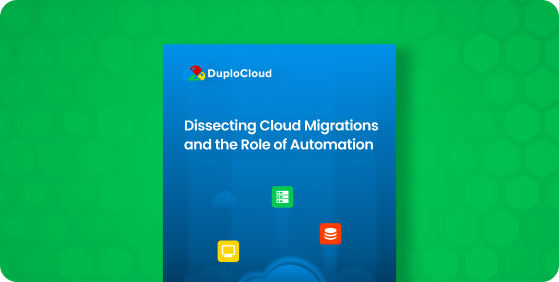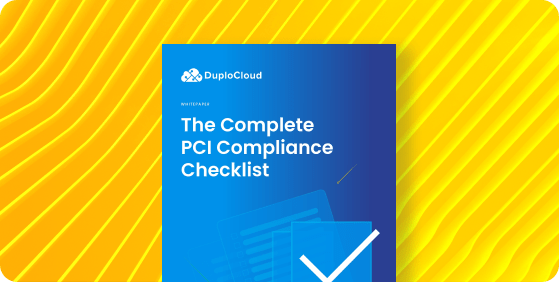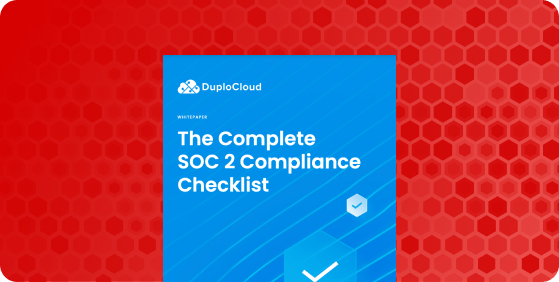These PCI compliance tools help you make and maintain secure systems
The payment card industry (PCI) has high standards for companies that handle customer payment information. Its most powerful players created the PCI Data Security Standard (PCI DSS) to ensure businesses treat their customers’ information with proper care, preventing unwanted access and instituting fail safes in the event of a breach. Obviously, protecting consumer privacy is critical, but meeting that standard can be a time-consuming process on your own. That’s why scores of companies have in turn developed PCI compliance solutions that make achieving, demonstrating, and maintaining compliance easier than ever.
These 13 PCI compliance tools will make it easier for your business to rise to PCI DSS standards and stay there, keeping customer data safe and speeding up your time to market.
Jump to a section…
SolarWinds Access Rights Manager
Security Information and Event Management (SIEM)
Malwarebytes Endpoint Protection and Response (EDR)
Cardholder Data Environment Protection
ManageEngine Endpoint DLP Plus
Macro PCI Compliance Tools
Achieving PCI compliance means meeting each of the 12 PCI DSS 3.2 requirements to the satisfaction either of a PCI-designed self-assessment or, for larger companies, a PCI-qualified Security Assessor. To maintain compliance, your business must also undergo quarterly network scans by a PCI-approved Network Scanning Vendor and complete an Attestation of Compliance (AOC) form. There are generally two approaches to top-down PCI compliance: cloud platforms and compliance platforms.
Cloud Platforms
Many of the leading cloud providers design their systems with compliance standards such as PCI DSS 3.2 in mind. Although your business must meet compliance standards itself, cloud providers can ease the compliance process significantly. Using their infrastructure can lead to faster deployment without sacrificing the security necessary for compliance.
DuploCloud
DuploCloud's cloud-based DevOps workflow integrates PCI DSS standards from the get-go. Because our product spans both provisioning and security controls, we're able to provide adherence to 90% of the required security controls set out of the box. We also provide a sample auditor and customer-ready InfoSec and Infrastructure Security documentation for all our tools, making it easy to tailor them to your company's policies and procedures.
Google Cloud
Google built its Cloud platform according to PCI DSS, and its systems undergo an annual third-party audit to certify each of the products in its stack according to PCI DSS 3.2 standards. Users can request the PCI DSS reports generated by these audits — conducted by a Qualified Security Assessor — via the Compliance Reports Manager. However, users must undergo their own PCI compliance assessment once the tools are configured for their business. Google provides a matrix detailing the responsibility shared between Google and businesses that use its platform to further clarify.
Compliance Platforms
Another option for achieving compliance is to employ a service to guide you through the compliance process, supplying tools as necessary. Rather than implement individual PCI compliance solutions for an a la carte approach to compliance, these services use deep familiarity with standards set by the PCI SSC to help you develop your compliance framework.
Secureframe
Secureframe works with businesses to help them meet a number of security compliances, including PCI DSS. It provides a library of compliance policies for easy adaptation to your business, and users can gather evidence and adjust controls from a central, easy-to-use dashboard. Employees can access materials and training through a portal, and Secureframe is as capable of serving small businesses as it is large enterprises. The system also continuously monitors and automatically collects evidence for continued compliance.
Strike Graph
Strike Graph can help your business achieve compliance with several standards, including PCI DSS, SOC 2, GDPR and more. The process for PCI DSS compliance begins with a risk assessment conducted through the Strike Graph platform, then provides a gap analysis and the corresponding tools you'll need for remediation. All of this can be viewed from a single compliance dashboard. Strike Graph can even connect your business with an approved PCI assessor and scale your solutions as your business grows.
Individual Compliance Tools
If your system is already up to snuff on many of the requirements of PCI DSS 3.2 and you’re looking to fill out your security offerings, you may opt to use tools that address specific, individual components of the standard. These tools will help fill gaps in your offerings to ensure you’re staying compliant.
Access Rights Management
One of the most important aspects of maintaining a secure system is controlling and monitoring which users can access which parts of the network. Workers should only be able to see the information they need to do their jobs because that reduces the damage a bad actor can deal should they acquire login credentials. Access rights management helps you ensure only the parties directly involved see customer information, making it a vital PCI compliance tool.
SolarWinds Access Rights Manager
SolarWinds produces several useful PCI compliance solutions, including this workhorse access rights manager. With it, you can keep an eye on your Active Directory, Exchange Server, SharePoint, and file servers. After you use it to create your custom access rights and controls for each user, this PCI compliance software automatically records information about each user, which systems they access, and when they access them. It displays that information on a central dashboard. The software can also scan for and highlight compliance issues and produce suggested remediation actions. Finally, it makes demonstrating compliance easier with preconfigured reports you can tailor to your business.
ManageEngine ADAudit Plus
AD Audit Plus from ManageEngine provides real-time Active Directory change tracking, user logon/logoff auditing, and automatic alerts around changes to user permissions. It employs machine learning to analyze user behavior, compare it against the historical record, and flag aberrations as potential breaches. It can also generate its own compliance reports for PCI DSS, saving time and effort.
Software Patch Management
No matter how sophisticated your security programs may be, there will always be bad actors looking for cracks through which to sneak. Keeping your PCI compliance software up to date is the best way to maintain a strong defense against breaches by incorporating the latest security improvements as soon as possible.
SolarWinds Patch Manager
SolarWinds Patch Manager helps your security stay a step ahead. It logs the other software running wherever it's deployed and raises alerts whenever an update arrives for any of it. Patch Manager then produces audit reports to show you’re applying updates in a timely fashion in keeping with PCI standards. It runs on Windows Server and integrates with Windows Server Update Services and Microsoft Endpoint Configuration Manager.
Security Information and Event Management (SIEM)
Staying on top of all your company's security infrastructure becomes much easier with the use of a Security Information and Event Management (SIEM) system. SIEMs aggregate security data from several sources such as endpoint security and intrusion detection systems, then turn that data into reports for staff to analyze in the event of a breach. Many modern SIEMs also integrate User and Entity Behavior Analytics (UEBA) and Security Orchestration, Automation, and Response (SOAR). UEBA analyzes user behavior on the lookout for unusual logins and other indicators of possible breaches. SOAR automates security actions so that in the event of a breach, the system can protect itself from the intruder through quarantining and other measures.
Wazuh
Wazuh is an open source security platform that provides both SIEM and extended detection and response (XDR) protection. Its solutions span endpoint security such as file integrity monitoring, threat intelligence and threat hunting, security operations like log data analysis, and cloud security. Log collection, file integrity checking, intrusion detection — all these important PCI DSS measures can be monitored from the Wazuh dashboard, making it easy to ensure they're working as intended.
Exabeam
Exabeam's cloud-native Security Operations Platform can safely take in and parse security data from wherever it's deployed. It comes prebuilt with huge stores of user behavior to aid in breach detection, and its automated threat detection, investigation, and response allow for shorter response times and more consistent results.
Anti-Malware Systems
Malware is one of the main threats to data security, as it can allow bad actors to steal, damage, or delete customer information from improperly secured systems. Spyware and remote access trojans enable data theft, while ransomware and destructive malware can delete or scramble your data to the point of uselessness. Anti-malware systems protect against these threats by searching for malware in the computers on which they're installed.
Malwarebytes Endpoint Protection and Response (EDR)
Whereas most anti-malware solutions rely on a threat database to detect problems in the system, this PCI compliance tool differentiates itself by searching for anomalous software signatures in processes running on the system. It then activates automated remediation procedures to remove any threats it discovers. It can also detect irregular activity by authorized users — potentially the result of stolen credentials — and saves backups of any changed files so that data can be restored in the event of a ransomware attack.
Trend Micro Security for Mac
Trend Micro is one of the most prominent cybersecurity companies in the field, and although its Mac anti-malware product is designed for home users, it's fully compliant with PCI DSS Requirement 5. Being designed for home users is an advantage of the system, ensuring an easy-to-use interface even for users who aren't technically proficient. It protects Macs from viruses and a range of internet attacks, including attempts to wrest control of the camera and microphone. It uses AI to continually update the list of viruses against which it can protect your system, and also offers email protection and password management.
Cardholder Data Environment Protection
The Cardholder Data Environment (CDE) is at the center of PCI compliance. Every business must define its own CDE, with any and all equipment and processes that concern cardholder data contained within it. Any IT elements that support that infrastructure are also part of your CDE, and all of it must appear in a CDE Diagram. The easiest way to define your business's CDE is to start wherever card data is stored, then work backward through all the software, hardware, and processes that put it there. The CDE must be defended from bad actors, and these PCI-compliant programs can help.
PCI-DSS compliance has 12 thorough requirements. Make sure you meet them all with our Complete PCI Compliance Checklist.

ManageEngine Endpoint DLP Plus
ManageEngine provides data loss prevention (DLP) with this software offering, which can be configured to PCI DSS-specific requirements through policy templates. It searches system endpoints for sensitive data and categorizes those instances, letting administrators know where that data has been stored to better protect it. It also tracks user activities on targeted data stores and controls the movements of the files that contain them.
PowerGREP
PowerGREP searches files for specified data formats such as credit card or social security numbers, making note of all locations wherein sensitive customer data is stored. Its search function is robust, crawling through text, binary, and compressed files for instances of the chosen data format. One drawback, however, is its somewhat dated and busy interface, which can make it harder with which to work — but it comes with a three-month money-back guarantee to offset purchase risks.
Password Protection Lockers
Just because it's basic doesn't mean it's not important. Password security is a core element of PCI compliance. The use of a password manager is highly recommended by security experts for several reasons. User-set passwords may seem safer because they can be memorized rather than logged, but in reality, they're at greater risk. User-set passwords must be shorter and simpler for users to memorize, making them more vulnerable to brute-force intrusion. Users who memorize their passwords can also more easily hand them away to phishing attempts. A password manager allows for long, randomly generated character strings that are effectively immune to both brute forcing and phishing. Randomized passwords are also easy to replace, and can be stored according to strict access procedures.
KeePass Password Safe
KeePass Password Safe is a free and easy-to-use method of storing large numbers of randomized passwords. It uses strong encryption methods to protect its contents, offers a powerful password-generating tool, and runs in the background to fill in passwords on-screen as needed.
Single Sign-On (SSO) Tools
Single sign-on is another method for managing risk around user credentials. SSO makes it possible for users to log into all the apps, websites, and data stores they need to access in a single session, rather than have a set of credentials for each one. That makes their lives easier, and makes monitoring their behavior easier. It also increases security by reducing the opportunities for passwords to be lost, stolen, or reused. Requiring just one password makes it more likely for users to create one that is long and complex without having to reuse it or write it down.
Okta
Okta's SSO solution can connect to and sync with identity stores such as your active directory, Lightweight Directory Access Protocol (LDAP), or HR systems in addition to many third-party identity providers, making it easy to distribute relevant access. It includes a central control point for viewing and managing user access, adaptive security policies, and a network of over 7,000 pre-built integrations for fast adoption. Beyond SSO, Okta offers multi-factor authentication, and other workflow optimizations.
PCI compliance can be a frustrating roadblock in the sprint to market, but it doesn’t need to be a headache. If you’re looking for a fast and simple way to speed up your PCI compliance process, DuploCloud is ready to help. We designed our platform with PCI standards in mind, and our DevSecOps Automation speeds up deployment with minimal chance of human error. We also provide the tools and documentation you’ll need to satisfy a PCI assessor. Read our whitepaper to learn more about how DuploCloud can help you achieve compliance.









